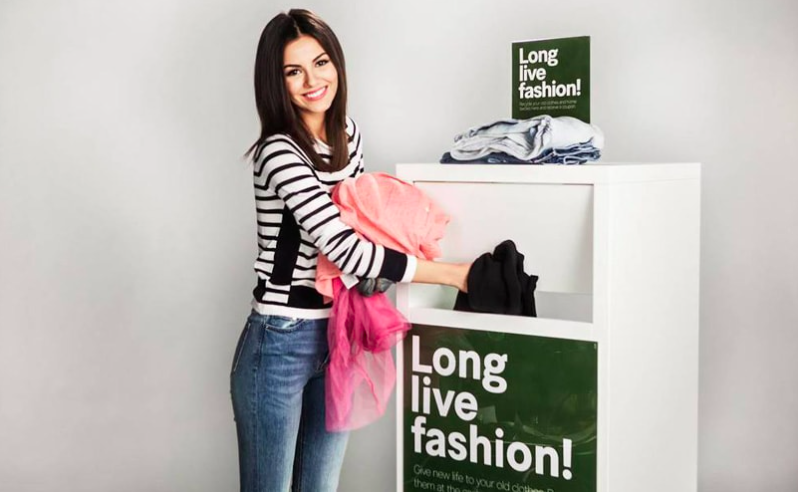To recycle your clothes is somewhat better than simply putting them in the trash bin, but to buy second hand is the real climate saver.
New LCA (life cycle analysis) research from Sandra Roos, Mistra Future Fashion and Chalmers University , shows that the highest climate impact comes from the production phase, and it doesn’t matter if it’s from virgin materials or recycled materials. On average to produce the fiber accounts for 15% of the total climate impact whiles the production phase i.e. thread spinning, weaving, dying and sewing accounts for 55% of the total impact. Buying second hand therefore saves up to 70% of the total impact since you are essentially skipping the production process in all. Recycled fibers are usually put through the production phase once again when being made into new fabric, which means additional pollution and energy consumption is added.

Several of the large clothing chains, such as H&M, The Gap and Gina Tricot are all accepting textile donations under mantras such as “Closing the Loop”. They encourage the consumer to bring in their old clothes in return for a voucher to buy new garments. But what happens to these donations? Many of our clothes today consist of mixed fibers. A pair of jeans for example is often a mix between cotton and elastan. Once the fibers are mixed it is a very hard and recourse demanding process to separate them again. The only garments that are recycled into new textiles today are 100% cotton, mainly white sheets, which are easy to dye again. Approximately 10% of our donations are sold as second hand within EU borders, 40% are sold to third world countries where the companies no longer control their end destination, another 40% ends up as isolation or low quality products to be sold in third world countries and the last 10% is usually burnt. Numbers borrowed from David Palm, Ramböll.
Furthermore, the choice of transportation to and from the store accounts for up to 22% of the total climate impact. This means that if you take the car to the store and buy a garment made out of for example recycled polyester the small win from buying recycled is overshadowed by your choice of transportation. End in end, in a perfect world we would all use public transportation to reach a second hand store where we buy all our clothes and make sure we maintain them in good condition for as long as possible.